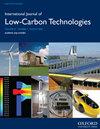Daily consumption monitoring method of photovoltaic microgrid based on genetic wavelet neural network
IF 2.3
4区 工程技术
Q3 ENERGY & FUELS
引用次数: 0
Abstract
In order to comprehensively monitor the daily consumption of photovoltaic power and power generation of photovoltaic microgrid, a daily consumption monitoring method of photovoltaic microgrid based on genetic wavelet neural network is proposed to reduce the relative error of daily consumption monitoring. Considering the power generation forms of various units such as wind power, thermal power, hydropower and photovoltaic power generation, the upper and lower limits of daily consumption of different units and the constraints of consumption calculation are analyzed to obtain the daily consumption of photovoltaic microgrid. On this basis, the daily consumption monitoring model of photovoltaic microgrid including multiple inputs and outputs is constructed by using Morlet wavelet function, and the power generation is calculated by wavelet neural network. The genetic algorithm is used to optimize the individual fitness of wavelet neural network through the training of the number of wavelet bases and related thresholds and weights, and to normalize the optimal individual fitness to realize the daily consumption monitoring of photovoltaic microgrid. The experiment shows that this method can monitor the actual photovoltaic power in sunny weather, and after 12 o’clock, the photovoltaic power gradually drops below 30 kW. In cloudy weather, the actual photovoltaic power reaches its peak at around 12 o’clock, ~45–50 kW, and drops to about 10 kW at 17 o’clock. And the power generation in cloudy days is relatively low, and the power generation in rainy days is the lowest. When the relative humidity is 30%, the power generation increases rapidly and keeps at 8 kWh. When the relative humidity is 50%, the power generation gradually drops to 2 kWh. When the temperature is 20°C, the maximum radiation intensity is about 0.6 kW m2. When the temperature is 30°C, the maximum radiation intensity is greater than 0.8 kW m2. At 11:00 and 12:00, the power generation error is 0.02 kWh. In order to improve the monitoring accuracy of photovoltaic power and daily power generation of photovoltaic microgrid in different environments.基于遗传小波神经网络的光伏微电网日用电量监测方法
为了对光伏发电日用电量和光伏微网发电量进行综合监测,提出了一种基于遗传小波神经网络的光伏微网日用电量监测方法,以减小光伏微网日用电量监测的相对误差。考虑风电、火电、水电、光伏发电等不同机组的发电形式,分析不同机组日用电量的上下限以及用电量计算的约束条件,得到光伏微网日用电量。在此基础上,利用Morlet小波函数构建多输入多输出的光伏微电网日用电量监测模型,并利用小波神经网络计算发电量。采用遗传算法通过训练小波基个数和相关阈值、权值来优化小波神经网络的个体适应度,并对最优个体适应度进行归一化,实现光伏微电网的日用电量监测。实验表明,该方法可以在晴天监测光伏实际功率,12点以后,光伏功率逐渐下降到30kw以下。在多云天气下,实际光伏功率在12点左右达到峰值,约45 - 50kw, 17点时降至10kw左右。阴天发电量相对较低,阴天发电量最低。当相对湿度为30%时,发电量迅速增加,保持在8kwh。当相对湿度为50%时,发电量逐渐下降到2kwh。当温度为20℃时,最大辐射强度约为0.6 kW m2。温度为30℃时,最大辐射强度大于0.8 kW m2。在11:00和12:00时,发电误差为0.02 kWh。为了提高不同环境下光伏发电和光伏微网日发电量的监测精度。
本文章由计算机程序翻译,如有差异,请以英文原文为准。
求助全文
约1分钟内获得全文
求助全文
来源期刊

International Journal of Low-carbon Technologies
Engineering-Architecture
CiteScore
4.30
自引率
4.30%
发文量
106
审稿时长
27 weeks
期刊介绍:
The International Journal of Low-Carbon Technologies is a quarterly publication concerned with the challenge of climate change and its effects on the built environment and sustainability. The Journal publishes original, quality research papers on issues of climate change, sustainable development and the built environment related to architecture, building services engineering, civil engineering, building engineering, urban design and other disciplines. It features in-depth articles, technical notes, review papers, book reviews and special issues devoted to international conferences. The journal encourages submissions related to interdisciplinary research in the built environment. The journal is available in paper and electronic formats. All articles are peer-reviewed by leading experts in the field.
 求助内容:
求助内容: 应助结果提醒方式:
应助结果提醒方式:


